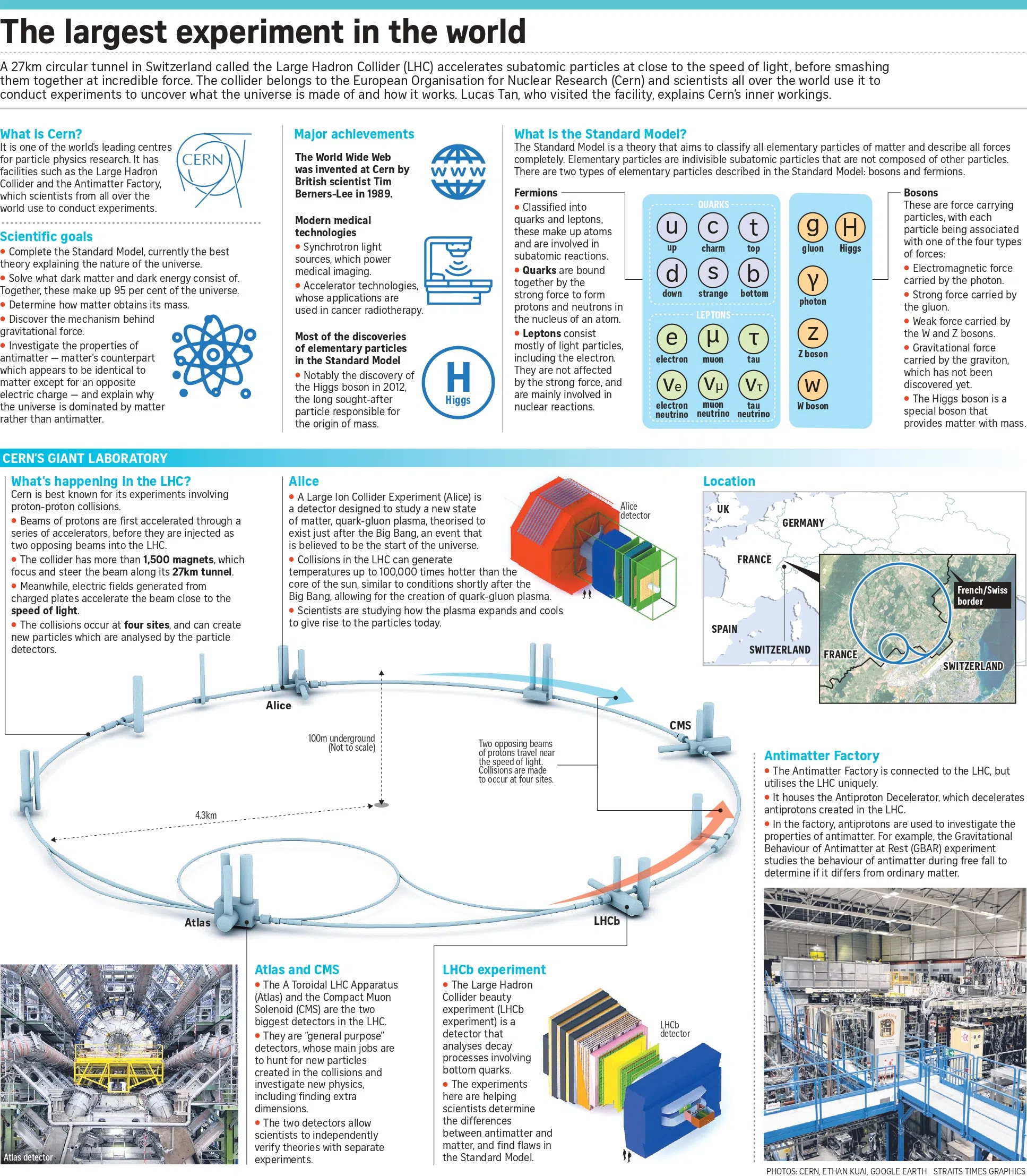Cern keen to collaborate with S’pore on particle physics research
Sign up now: Get ST's newsletters delivered to your inbox

The Large Hadron Colider at the Geneva-based European Organisation for Nuclear Research, more commonly known as Cern.
PHOTO: CERN
Follow topic:
GENEVA - Scientists at a world-renowned particle physics research institution are interested in working with Singapore, citing benefits that both sides could reap from a partnership.
The Geneva-based European Organisation for Nuclear Research, more commonly known as Cern, expressed hopes that it could one day count the Republic among its partners from which it can tap the minds of top scientists.
Professor Emmanuel Tsesmelis, the head of Cern associate members and non-member states relations, told The Straits Times: “We see a lot of advantages in collaborating because the universities we know, NUS (National University of Singapore) and NTU (Nanyang Technological University), are very strong universities with very strong physics, engineering and computing departments.”
Mr Ameir Shaa, a Singaporean PhD student completing his thesis at Cern, said scientists in Singapore have a strong work ethic and culture that they can bring to the table at the centre.
Cern has various types of formal partnerships with 80 countries: 23 members finance and decide the centre’s activities, 10 associate members fund and provide personnel, and 47 partners have signed international cooperation agreements enabling their participation in Cern’s programmes.
The Republic has yet to ink an official partnership on any level with the centre.
“We’ll be very interested to have Singapore more involved in what we do here, whether it’s for theoretical physics, experimental physics, or technology,” Prof Tsesmelis said.
A partnership would give Singapore first-hand access to Cern’s technologies, whose innovations benefit other sectors such as medicine, industry, electronics and robotics.
For example, in healthcare, Cern’s technologies are used in cancer radiotherapy, positron emission tomography (PET) for medical imaging and diagnostics, and 3D colour X-ray imaging, among others.
Mr Ameir, 29, said: “Particle physics is not just about particle physics. There are many applications that could benefit Singapore. The World Wide Web was born here. Touchscreen was invented here. Big data, data analysis techniques... it was never just about finding the Higgs boson.”
The Higgs boson, a subatomic particle theorised to give matter mass, was discovered at Cern in 2012.
Mr Ameir hopes Singapore can spearhead South-east Asia’s entry into particle physics with its strong influence in the region.
In Asia, Cern only has one full member (Israel), and three associate members (India, Pakistan and Ukraine).
The Republic has hosted many major high-energy physics conferences and workshops, including the International Conference on High Energy Physics in 1990, and the Particle Physics, Astrophysics and Quantum Field Theory conference in 2008.
NUS and NTU offer acclaimed programmes training PhD students in particle physics, and several of their graduates have embarked on careers in the field.
Mr Ameir said: “If you think long term, there’s going to be a need for South-east Asia to take part in fundamental science in future...
“And because of Singapore’s influence in South-east Asia, I believe that we should be the first to make the leap, and be the hub for this kind of research in the future.”


